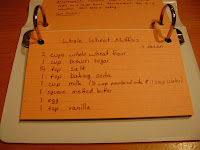
Creating a budget isn't so bad, sticking to it is the hardest part for me. At least it was the first 6 months. Now I almost can't function without looking at the budget and making sure everything is accounted for. If you only knew how I used to operate you would understand what a long way I have come!






 RSS Feed
RSS Feed